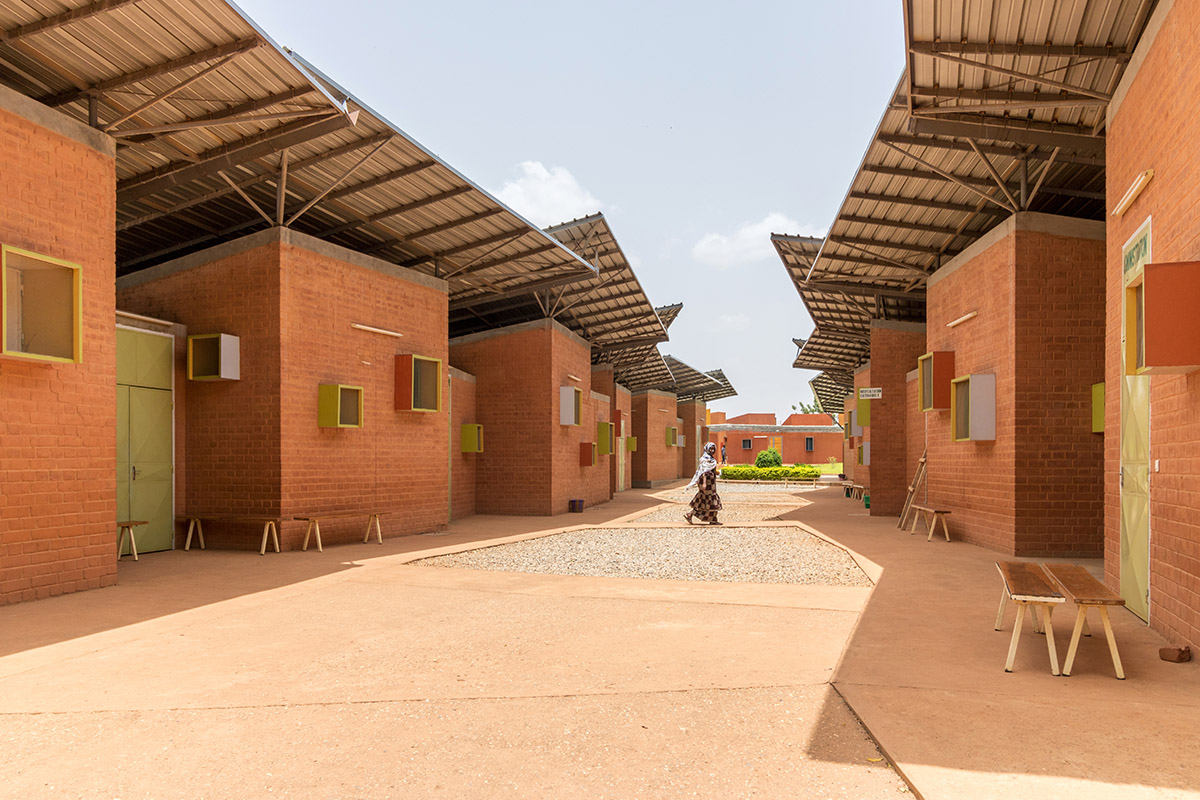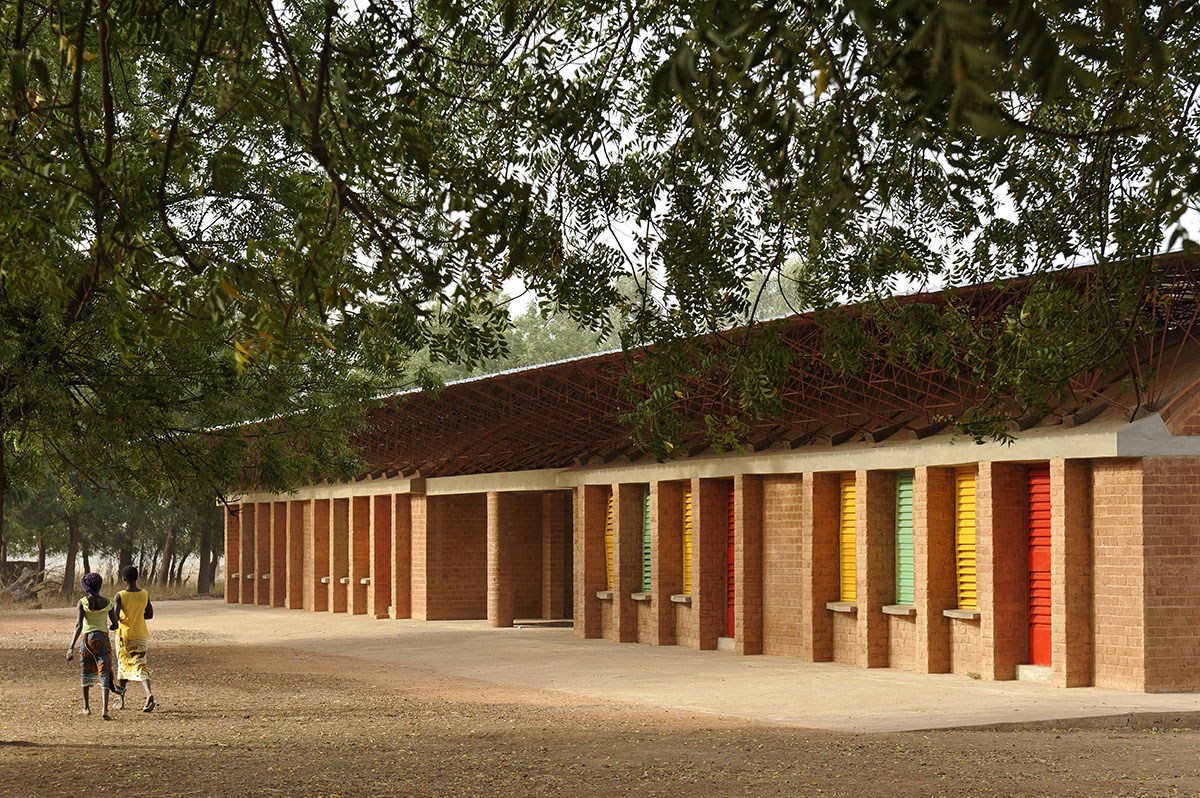Submitted by WA Contents
"I want my building to inspire the user" says Pritzker Architecture Prize-winner Francis Kéré
Germany Architecture News - Mar 25, 2022 - 09:16 3832 views
Burkinese architect Diébédo Francis Kéré, principal and founder of Kéré Architecture, was named as the laureate of the 2022 Pritzker Architecture Prize.
Announced on Tuesday, 15 March, Diébédo Francis Kéré became the first African architect to win this prestigious Pritzker Architecture Prize since the Pritzker Architecture Prize was launched in 1979. The Pritzker Architecture Prize is internationally known as architecture’s highest honor and is often referred to as "architecture’s Nobel" and “the profession’s highest honor.”
Kéré became the 51st Laureate of the Pritzker Architecture Prize, and he is a dual citizen of Burkina Faso and Germany.
In this video, Diébédo Francis Kéré explained his design philosophy and detailed how his architecture focuses on people and responds to local contextual factors his buildings are situated in.

Surgical Clinic and Health Centre, Léo, Burkina Faso, 2014. Photography courtesy of Francis Kéré
"Architecture is primarily a service to humanity"
"Architecture is primarily a service to humanity, to create an environment where a human being can develop itself, can be happy, can have what I call wellbeing," he said in the video.
Kéré was born in Gando, Burkina Faso, and his practice Kéré Architecture is based in Berlin, Germany. Kéré is always known as socially-minded architect and known for his sensitivity on locally-sourced materials and community-led processes in architecture.
He designed several buildings including primary, secondary, postsecondary schools and medical centres across Africa, Kenya, Mozambique and Uganda. Besides African countries, he designed temporary and permanent structures in Denmark, Germany, Italy, Switzerland, the United Kingdom, and the United States.
He is currently designing Benin's new National Assembly building inspired by African palaver tree.

Gando Primary School. Photography courtesy of Erik-Jan Owerkerk
"I want my building to inspire the user, to make the user happy"
When Kere won a scholarship to attend the Technische Universität Berlin in 1995, despite being far from Burkina Faso, Kéré's aim was still to build in her homeland. He was aware of his priorities and privilege and he established a foundation, titled “Schulbausteine für Gando e.V.”, translated to “school building blocks for Gando”.
The foundation was renamed as Kéré Foundation e.V. in 1998 to fundraise and advocate for a child’s right to a comfortable classroom.
He built his first building, named Gando Primary School in 2001 in Gando, Burkina Faso, and was entirely built by and for the people of Gando.
"My philosophy is to say that everyone deserves luxury in terms of quality," said Kéré in the video.
"So the poorest, but also the rich. I want my building to inspire the user. To make the user happy," he added.
"I want my building to inspire the user, to make the user happy."

Startup Lions Campus, Turkana County, Kenya, 2021. Photography courtesy of Francis Kéré
"I think it's fundamental to think about what is existing in the given place where you're going to build, and then check, what is my contribution as an architect?" he continued.
"How can I do things differently to change that situation? That is not the best at all. If you build in the hot climate region, which is what I'm doing," Kéré added.
"First, you think about how to get a building to work without an artificial cooling system? Look around what is an alternative?."
"To change the situation that is not the best at all". "If you build in the hot climate, that's what I'm doing, the first thing you think about how can I get a building work without artificial cooling system."

Lycée Schorge Secondary School 2016 in Koudougou, Burkina Faso. Photography © Iwan Baan
"If you have an alternative, look around what is alternative?. "And, how can I better apply to improve the building condition where I better serve to people," Kéré continued.
"It is always about people, it is about people with low income, but also for the people earning a lot," he added.
"They are looking around for inspiration and innovation. And that is what we have to look for."
"How can I contribute as an architect to change the situation and to create building that inspires people."

Burkina Faso National Assembly in Ouagadougou, Burkina Faso (In Progress). Rendering courtesy of Kéré Architecture
"I want my buildings to inspire the user to make the user happy. I want them to start to dream of better end not to stuck in a level," Kéré said.
"This is what I want to achieve with my architecture, to push people to dream, to push people to really change the paradigm and try to create and innovate."
Kere's architectural skill and talent undoubtedly showed how a school can be built by processing every part of it, when combined with the local workforce, the original materials discovered by the architect, and the creative forms of modern engineering.
Gando Primary School in 2001 was completed with great mastery precisely as a result of local collaborations and the use of local resources.
His recent work, The Benin National Assembly in the country's capital Porto-Novon, is currently under construction and situated on a public park, is inspired by the palaver tree. Kéré Architecture recently completed an educational campus in Kenya.
Last year, Anne Lacaton and Jean-Philippe Vassal, founders of French architecture studio Lacaton & Vassal Architectes, have been named as the recipients of the 2021 Pritzker Architecture Prize.
The past laureates are Irish duo Yvonne Farrell and Shelley McNamara were named as the 2020 Laureate of the Pritzker Architecture Prize.
Top video © The Hyatt Foundation/The Pritzker Architecture Prize.
